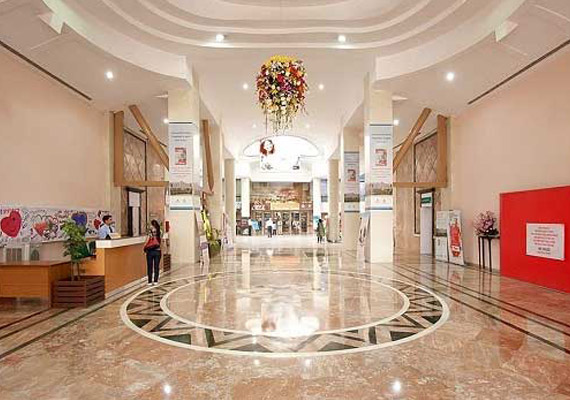Pyeloplasty Treatment in India
treatment
starting from
Introduction
The kidneys are two bean-shaped organs located in the back of the abdominal cavity, responsible for filtering waste products and excess fluids from the blood to form urine. Proper kidney function is vital for maintaining a healthy internal balance in the body. However, certain conditions, such as ureteropelvic junction obstruction (UPJO), can lead to kidney problems. Pyeloplasty, a surgical procedure designed to correct UPJO, plays a significant role in preserving kidney health. In this detailed blog, we will delve deeper into pyeloplasty, covering its purpose, indications, various techniques, preoperative preparations, recovery process, potential risks, and patient outcomes.
1. Understanding Pyeloplasty
Pyeloplasty is a surgical intervention aimed at restoring normal urine flow by correcting a blockage or narrowing in the ureteropelvic junction (UPJ), which connects the renal pelvis to the ureter. UPJO can be congenital, present from birth, or acquired due to various factors like scarring, kidney stones, or other urological conditions. When the UPJ is obstructed, urine backs up in the kidney, causing increased pressure that can lead to kidney damage or impaired kidney function. Pyeloplasty involves reconstructing and widening the narrowed UPJ, allowing for proper urine drainage and preserving kidney health.
2. When is Pyeloplasty Necessary?
Pyeloplasty is recommended when individuals are diagnosed with UPJO and experiencing symptoms or signs of kidney dysfunction. These may include recurrent kidney infections, kidney stones, persistent pain in the flank or abdomen, blood in the urine, or hydronephrosis (enlargement of the kidney due to urine buildup). If left untreated, UPJO can lead to kidney damage and eventual kidney failure, making pyeloplasty a crucial intervention to prevent further complications and preserve overall kidney function.
3. The Pyeloplasty Procedure
Pyeloplasty can be performed using different surgical techniques, each with its own benefits and considerations. The choice of technique depends on the severity of the obstruction, the surgeon's expertise, and the patient's overall health.
- Open Pyeloplasty: This traditional approach involves making a large abdominal incision to access the kidney and UPJ. The surgeon then removes the narrowed segment and reconstructs the junction using sutures or stents to widen the passage.
- Laparoscopic Pyeloplasty: In this minimally invasive technique, several small incisions are made in the abdomen. A laparoscope (a thin, lighted tube with a camera) and specialized instruments are inserted through these incisions. The surgeon uses real-time imaging to guide the procedure and reconstruct the UPJ.
- Robot-assisted Laparoscopic Pyeloplasty: Similar to laparoscopic pyeloplasty, this approach utilizes robotic arms controlled by the surgeon. The robotic system offers enhanced dexterity and precision, making it an attractive option for complex cases.
4. Preparing for Pyeloplasty
Before undergoing pyeloplasty, patients undergo a thorough evaluation that includes blood tests, imaging studies (such as CT scans or ultrasounds), and discussions about their medical history and current medications. The medical team will assess the overall health of the patient and identify any potential risks or contraindications to surgery. It is crucial for patients to inform the surgical team about any allergies, medications, or pre-existing medical conditions to ensure a safe procedure and optimal outcomes.
5. What to Expect During Recovery
The recovery period following pyeloplasty can vary depending on the surgical technique employed and the individual's overall health. However, there are some common aspects of the recovery process:
- Hospital Stay: Patients can expect to stay in the hospital for one to several days, depending on the complexity of the surgery and how well the patient recovers.
- Pain Management: Pain and discomfort are common after the surgery, but they can be managed effectively with prescribed pain medications.
- Stent Placement: In some cases, a stent may be placed in the ureter to keep it open during the healing process. The stent allows urine to flow freely from the kidney to the bladder. It is typically removed in a follow-up appointment after the healing is complete.
- Activity Restrictions: Patients are advised to avoid strenuous activities and heavy lifting during the initial recovery period to promote proper healing and minimize the risk of complications.
6. Potential Risks and Complications
Although pyeloplasty is generally considered safe and effective, like any surgical procedure, it carries certain risks. It is essential for patients to be aware of these potential complications, even though they are relatively rare:
- Bleeding or Infection: As with any surgery, there is a risk of bleeding or infection at the incision site. Strict adherence to hygiene and wound care protocols minimizes this risk.
- Anesthesia-related Issues: Some patients may experience adverse reactions to anesthesia, but the anesthesiologist carefully monitors patients throughout the surgery to ensure their safety.
- Scarring or Stricture: In rare cases, scarring or stricture may occur at the surgical site, potentially requiring further treatment or intervention.
- Persistent UPJO: Although pyeloplasty has a high success rate, there is a small possibility of the UPJO returning, necessitating additional intervention.
- Urinary Leakage: In rare cases, there may be some urinary leakage at the repair site, which usually resolves on its own or with appropriate medical management.
- Reaction to Stent: Some patients may experience discomfort or irritation due to the presence of the stent. These symptoms typically improve after the stent is removed.
How It Works
Need help in organizing medical travel to India?











